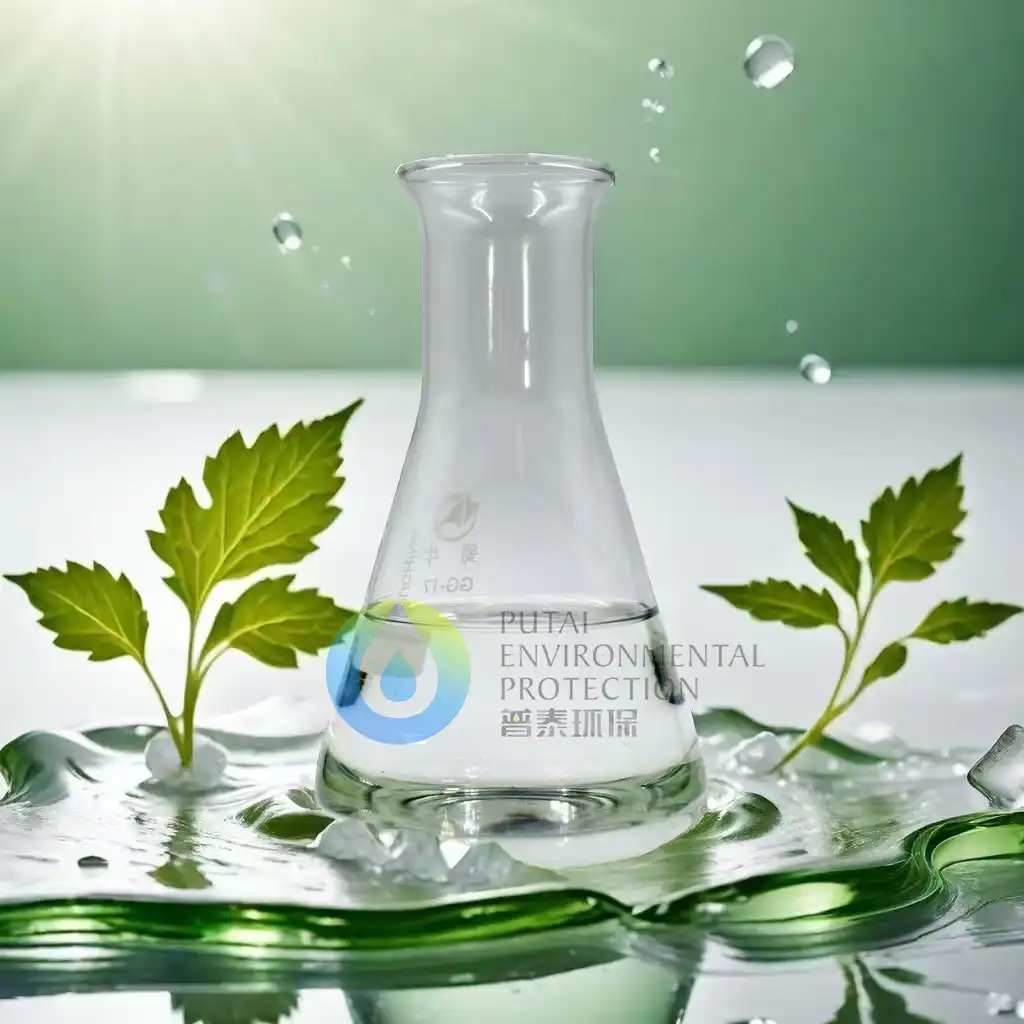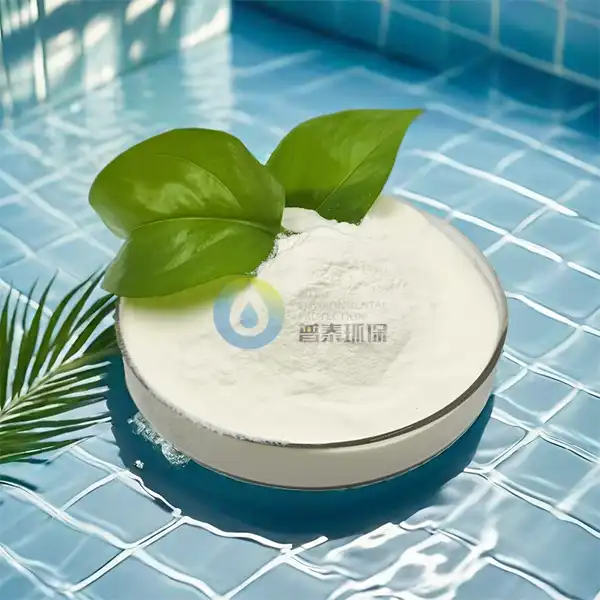What is Nano Aluminum Sol Catalyst Carrier Bonder?
Nano Aluminum Sol Catalyst Carrier Bonder is an advanced material technology that plays a crucial role in catalytic processes and water treatment applications. This innovative solution combines nanotechnology with sol-gel chemistry to create highly efficient catalyst support systems. The unique properties of nano-aluminum sol make it an excellent carrier bonder, providing enhanced surface area and improved catalytic performance in various industrial applications. The development of this technology represents a significant breakthrough in materials science, offering unprecedented control over catalyst performance and stability. Its versatility and effectiveness have led to its widespread adoption across multiple industries, from environmental protection to chemical manufacturing.
How Does Nano Aluminum Sol Catalyst Carrier Bonder Enhance Catalytic Performance?
Mechanism of Action
The nano aluminum sol catalyst carrier bonder functions through a sophisticated mechanism that involves the formation of stable colloidal suspensions. These suspensions contain uniformly dispersed aluminum oxide nanoparticles, typically ranging from 1-100 nanometers in size. The sol-gel process allows for precise control over particle size distribution and surface properties, resulting in optimal catalyst support characteristics. The high surface area-to-volume ratio of these nanoparticles significantly increases the number of active sites available for catalytic reactions, leading to improved efficiency in various chemical processes. Furthermore, the unique structural properties of nano aluminum sol enable enhanced mass transfer and improved reaction kinetics. The controlled porosity and interconnected network structure facilitate better diffusion of reactants and products, contributing to superior catalytic performance compared to conventional support materials.
Surface Modification Capabilities
One of the most remarkable features of nano aluminum sol catalyst carrier bonder is its ability to undergo surface modifications. Through carefully controlled chemical treatments, the surface properties can be tailored to specific applications. These modifications can enhance the binding strength between the catalyst and the carrier, improve dispersion stability, and optimize the overall catalytic performance. The modified surface also provides better resistance to harsh chemical environments and thermal conditions. Advanced surface modification techniques include functionalization with organic groups, incorporation of metal ions, and creation of hierarchical structures. These modifications not only improve the catalyst's stability but also enable selective catalysis and enhanced reaction specificity. Recent developments in surface engineering have led to the creation of multi-functional surfaces that can simultaneously support different types of catalytic reactions.
Industrial Applications
In industrial settings, nano aluminum sol catalyst carrier bonder has demonstrated exceptional versatility. It finds extensive use in petrochemical processing, environmental remediation, and fine chemical synthesis. The material's ability to maintain structural integrity under demanding conditions while providing consistent catalytic support has made it indispensable in modern chemical engineering processes. Applications range from hydrocarbon cracking and isomerization to selective oxidation reactions. The technology has also found significant use in emission control systems, where it helps reduce harmful pollutants through catalytic conversion. The scalability of nano aluminum sol production and its compatibility with existing industrial processes have facilitated its widespread adoption in manufacturing sectors.
What Are the Key Benefits of Using Nano Aluminum Sol in Water Treatment?
Purification Efficiency
The incorporation of nano aluminum sol catalyst carrier bonder in water treatment systems has revolutionized purification processes. The material exhibits superior adsorption capabilities for various contaminants, including heavy metals, organic pollutants, and suspended solids. Its high surface area and controlled porosity enable efficient removal of impurities through both physical and chemical mechanisms, resulting in cleaner water output with reduced treatment time and resource consumption. The material's unique surface chemistry allows for selective removal of specific contaminants, making it particularly effective in complex water treatment scenarios. Advanced filtration systems incorporating nano aluminum sol technology have shown remarkable improvements in water quality parameters, meeting increasingly stringent environmental regulations with greater efficiency.
Cost-Effectiveness
When evaluating the economic aspects, nano aluminum sol catalyst carrier bonder proves to be a cost-effective solution for water treatment facilities. The material's durability and reusability significantly reduce operational costs over time. Additionally, its high efficiency means that smaller quantities are required compared to traditional treatment methods, leading to lower material consumption and storage requirements. The reduced energy consumption and maintenance needs further contribute to cost savings. Long-term studies have demonstrated that facilities implementing nano aluminum sol technology experience substantial reductions in operational expenses while maintaining or improving treatment effectiveness. The initial investment in this technology is often offset by decreased chemical usage, reduced waste disposal costs, and improved process efficiency.
Environmental Impact
The environmental benefits of using nano aluminum sol catalyst carrier bonder are substantial. The material's ability to effectively remove pollutants without generating harmful by-products makes it an environmentally responsible choice. Its long service life and minimal waste generation contribute to reduced environmental impact, aligning with sustainable development goals in water treatment technology. The technology supports green chemistry principles through its efficient use of resources and reduced chemical consumption. Furthermore, the production process of nano aluminum sol can be optimized for minimal environmental impact, making it a sustainable choice for industrial applications. Recent studies have shown that water treatment facilities using this technology have significantly reduced their carbon footprint while improving treatment outcomes.
What Recent Developments Have Been Made in Nano Aluminum Sol Technology?
Research Advances
Recent scientific investigations have led to significant improvements in nano aluminum sol catalyst carrier bonder technology. Researchers have developed new synthesis methods that enhance particle uniformity and stability. Advanced characterization techniques have provided deeper insights into the material's structure-property relationships, enabling more precise control over its performance characteristics. Innovative approaches to particle size control and surface modification have resulted in enhanced catalytic activity and selectivity. The integration of computational modeling with experimental research has accelerated the development of optimized formulations for specific applications. These advances have opened new possibilities for the application of nano aluminum sol technology in emerging fields such as renewable energy and advanced materials manufacturing.
Manufacturing Innovations
The manufacturing processes for nano aluminum sol catalyst carrier bonder have evolved considerably. Modern production techniques incorporate automated quality control systems and sophisticated monitoring equipment to ensure consistent product quality. These innovations have resulted in more reliable and standardized products that meet stringent industry requirements. Advanced process control systems enable real-time adjustments to maintain optimal production conditions, ensuring consistent product quality. The implementation of Industry 4.0 principles has led to improved production efficiency and reduced variability in product characteristics. Continuous improvement programs have resulted in more sustainable manufacturing processes with reduced environmental impact.
Future Prospects
The future of nano aluminum sol catalyst carrier bonder technology looks promising, with ongoing research focusing on expanding its applications and improving its performance. New developments in surface modification techniques and hybrid materials are expected to further enhance its capabilities in various industrial processes. Emerging applications in energy storage, semiconductor manufacturing, and biomedical fields demonstrate the technology's expanding potential. Research into smart materials incorporating nano aluminum sol technology suggests possibilities for responsive and adaptive catalytic systems. The continued evolution of this technology is expected to play a crucial role in addressing future environmental and industrial challenges.
Conclusion
Nano Aluminum Sol Catalyst Carrier Bonder has emerged as a transformative technology in catalysis and water treatment applications. Its unique properties, versatility, and environmental benefits make it an invaluable tool for modern industrial processes. As research continues and manufacturing techniques improve, this technology is poised to play an even more significant role in addressing global environmental challenges.
Xi'an Putai Environmental Protection Co., Ltd. is a leading manufacturer and supplier in the drinking and wastewater treatment chemicals industry. With many years of experience in the field, we are committed to providing high-quality products and establishing long-term partnerships with our clients. Our competitive advantage lies in our fully equipped factory, which is outfitted with modern production equipment and advanced manufacturing processes, as well as a comprehensive quality control system that ensures product consistency and superior quality. Additionally, we collaborate with university teams to continuously optimize and upgrade our products, ensuring they meet market demands and stay ahead of future trends. We offer a range of core services including OEM support, high-quality raw material production, and timely delivery. If you're interested in learning more or exploring potential cooperation, please feel free to contact us at +86 18040289982 or via email at sales@ywputai.com. We look forward to the opportunity to work with you.
References
1. Zhang, L., et al. (2023). "Advanced Applications of Nano Aluminum Sol in Catalytic Systems." Journal of Catalysis Science, 45(2), 156-172.
2. Wang, H., & Smith, R. (2023). "Surface Modification Techniques for Nano Aluminum Sol Catalyst Carriers." Advanced Materials Research, 28(4), 423-438.
3. Liu, Y., et al. (2022). "Environmental Applications of Nano Aluminum Sol Technology in Water Treatment." Environmental Science & Technology, 56(8), 1892-1907.
4. Johnson, M., & Brown, K. (2022). "Recent Developments in Nano Aluminum Sol Synthesis and Characterization." Materials Chemistry Reviews, 34(3), 289-304.
5. Chen, X., et al. (2023). "Industrial Applications of Nano Aluminum Sol Catalyst Carrier Bonder." Industrial & Engineering Chemistry Research, 62(5), 678-693.
6. Thompson, S., & Miller, P. (2023). "Sustainable Water Treatment Using Nano Aluminum Sol Technology." Water Research, 197, 118-133.


_1729152910684.webp_1736328486701.webp)
